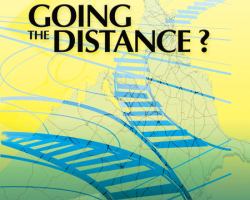Category of Content
Siting Experience Documents Only
Publication Date
Keywords
EBS Radionuclide Transport Abstraction
EBS Radionuclide Transport Abstraction
The purpose of this report is to develop and analyze the Engineered Barrier System (EBS) Radionuclide Transport Abstraction Model, consistent with Level I and Level II model validation, as identified in Technical Work Plan for: Near-Field Environment: Engineered Barrier System: Radionuclide Transport Abstraction Model Report (BSC 2006 [DIRS 177739]). The EBS Radionuclide Transport Abstraction (or RTA) is the conceptual model used in the Total System Performance Assessment (TSPA) to determine the rate of radionuclide releases from the EBS to the unsaturated zone (UZ).
Extended Storage and Transportation - Evaluation of Drying Adequacy
Extended Storage and Transportation - Evaluation of Drying Adequacy
The U.S. Nuclear Regulatory Commission (NRC) is evaluating the safety and security of spent nuclear fuel (SNF) stored in dry casks for extended time periods before transportation to a location where the SNF is further processed or permanently disposed.
Overview of the Section 180(c) Program: History, Lessons Learned, and Potential Next Steps
Overview of the Section 180(c) Program: History, Lessons Learned, and Potential Next Steps
The U.S. Department of Energy’s (DOE) Office of Civilian Radioactive Waste Management (OCRWM) is responsible, under the Nuclear Waste Policy Act of 1982, for the transportation of spent nuclear fuel and high-level radioactive waste from point of origin to destination at a federal storage or disposal facility. Section 180(c), written into the Nuclear Waste Policy Act Amendments of 1987, requires OCRWM to prepare public safety officials along the routes for these shipments.
Geological Disposal of Radioactive Waste
Geological Disposal of Radioactive Waste
The objective of this safety requirements publication is to set down the protection objectives and criteria for geological disposal and to establish the requirements that must be met to ensure the safety of this disposal option, consistent with the established principles of safety for radioactive waste management.
Going the Distance? The Safe Transport of Spent Nuclear Fuel and High-Level Radioactive Waste in the United States - Summary
Going the Distance? The Safe Transport of Spent Nuclear Fuel and High-Level Radioactive Waste in the United States - Summary
This new report from the National Research Council’s Nuclear and Radiation Studies Board (NRSB) and the Transportation Research Board reviews the risks and technical and societal concerns for the transport of spent nuclear fuel and high-level radioactive waste in the United States. Shipments are expected to increase as the U.S. Department of Energy opens a repository for spent fuel and high-level waste at Yucca Mountain, and the commercial nuclear industry considers constructing a facility in Utah for temporary storage of spent fuel from some of its nuclear waste plants.

